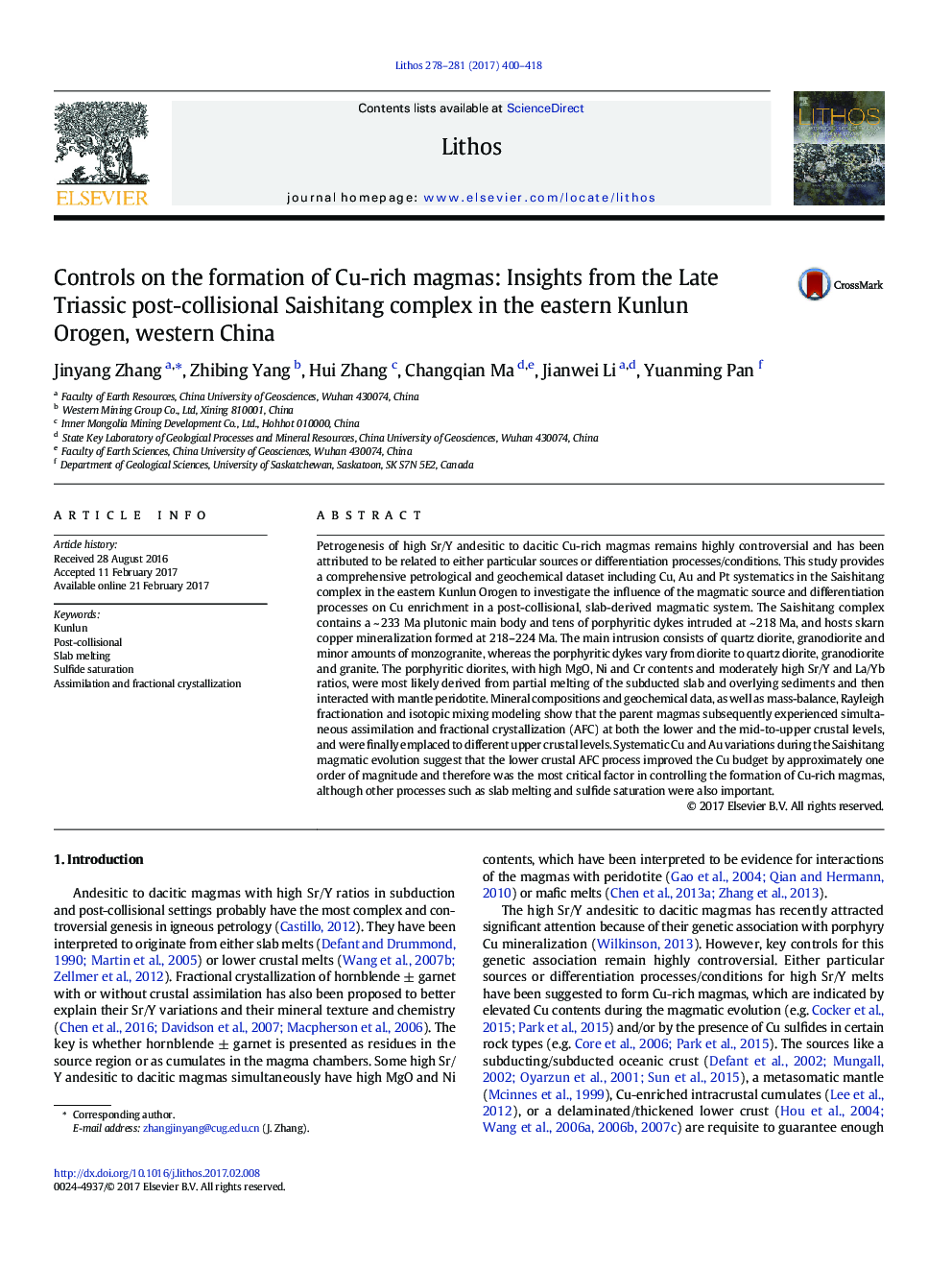| کد مقاله | کد نشریه | سال انتشار | مقاله انگلیسی | نسخه تمام متن |
|---|---|---|---|---|
| 5784177 | 1638632 | 2017 | 19 صفحه PDF | دانلود رایگان |

- The Saishitang complex contains a plutonic main body and tens of porphyritic dykes.
- Parent magmas derived from subducted slab and overlying sediments.
- Magmas experienced AFC at both lower and mid-to-upper crustal levels.
- Lower crustal AFC process was the most critical factor for Cu-rich magmas.
Petrogenesis of high Sr/Y andesitic to dacitic Cu-rich magmas remains highly controversial and has been attributed to be related to either particular sources or differentiation processes/conditions. This study provides a comprehensive petrological and geochemical dataset including Cu, Au and Pt systematics in the Saishitang complex in the eastern Kunlun Orogen to investigate the influence of the magmatic source and differentiation processes on Cu enrichment in a post-collisional, slab-derived magmatic system. The Saishitang complex contains a ~Â 233Â Ma plutonic main body and tens of porphyritic dykes intruded at ~Â 218Â Ma, and hosts skarn copper mineralization formed at 218-224Â Ma. The main intrusion consists of quartz diorite, granodiorite and minor amounts of monzogranite, whereas the porphyritic dykes vary from diorite to quartz diorite, granodiorite and granite. The porphyritic diorites, with high MgO, Ni and Cr contents and moderately high Sr/Y and La/Yb ratios, were most likely derived from partial melting of the subducted slab and overlying sediments and then interacted with mantle peridotite. Mineral compositions and geochemical data, as well as mass-balance, Rayleigh fractionation and isotopic mixing modeling show that the parent magmas subsequently experienced simultaneous assimilation and fractional crystallization (AFC) at both the lower and the mid-to-upper crustal levels, and were finally emplaced to different upper crustal levels. Systematic Cu and Au variations during the Saishitang magmatic evolution suggest that the lower crustal AFC process improved the Cu budget by approximately one order of magnitude and therefore was the most critical factor in controlling the formation of Cu-rich magmas, although other processes such as slab melting and sulfide saturation were also important.
Journal: Lithos - Volumes 278â281, May 2017, Pages 400-418